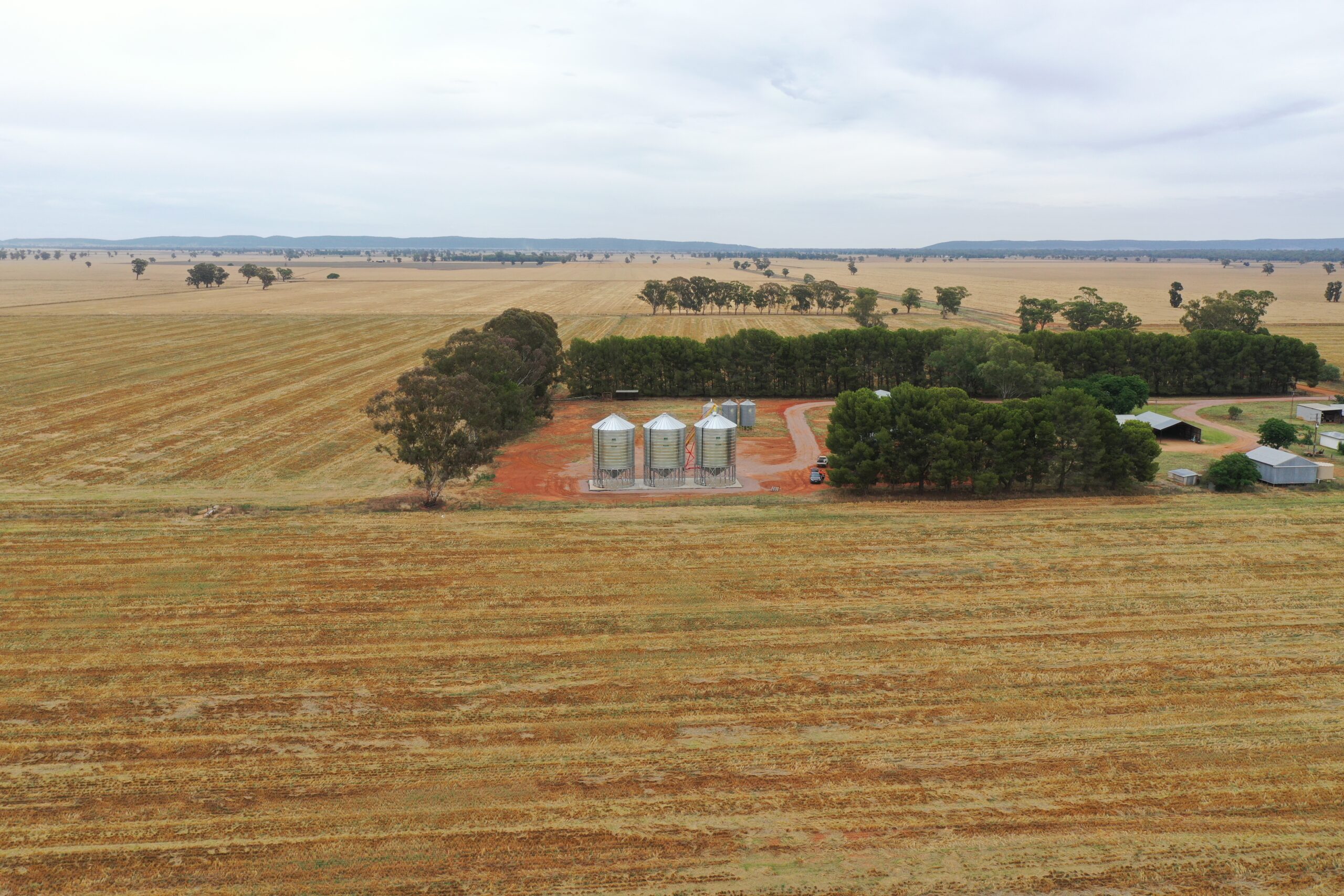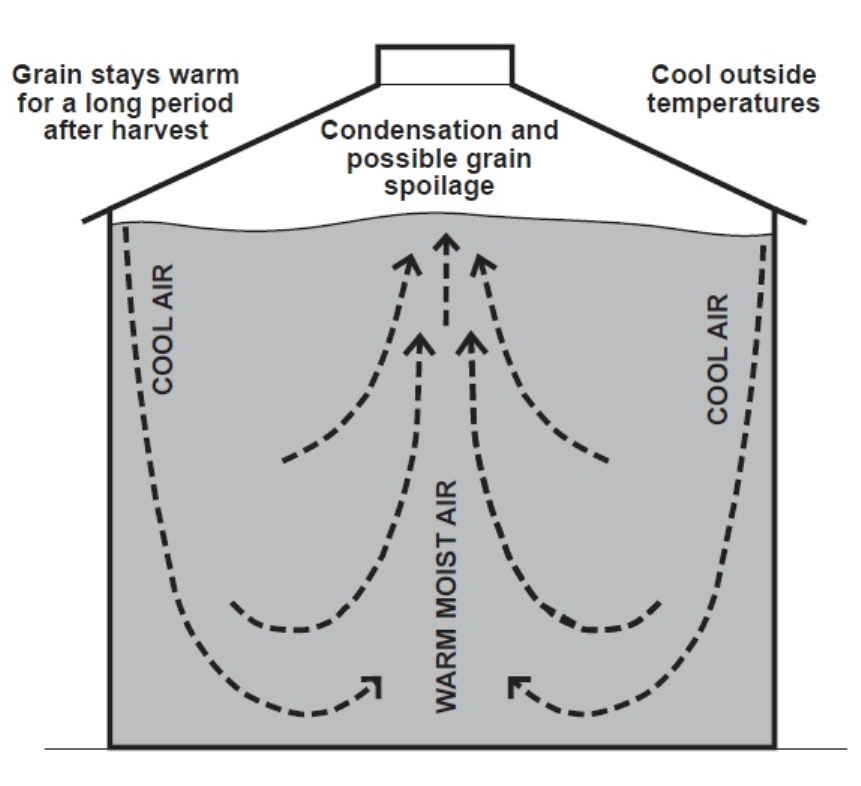Aeration: What You Need to Know

Forever, there has been confusion surrounding the differences between aeration cooling and drying. It can be difficult to know when they’re needed, as well as when to stop.
What cannot be put up for debate is whether these systems are valuable or not. Undoubtedly, they are some of the most powerful non-chemical tools available within Australia. Aeration systems are designed to do four main things- reduce moisture in stored grain, aid in preventing mould, inhibit insect development and maintain seed quality.
Grain is one of the most effective heat insulators known, with the ability to maintain its temperature for months without interference. As to be expected, when grain is stored there are many tiny air pockets, not unsimilar to how housing insulation works. Within a matter of days of entering your silo, all those air pockets will reach a temperature and humidity equilibrium. Warm, high moisture environments are the ideal conditions for a landslide of issues to begin.

Let’s begin with aeration drying. Occasionally, grain needs to be harvested before it’s quite ready, perhaps due to forecasted rain or logistical constraints. Grain receival facility contracts for wheat and barley require an absolute maximum of 12.5 per cent moisture content. This 12.5%MC has been found to be the perfect sweet spot between safe storage and grower value. Grain stored at too high of a moisture content is at a far greater risk of condensation, hot spots and mould, destroying the marketability of said grain.
Aeration drying works by essentially pulling the moisture out of grain with a high airflow rate. Anything upwards of 15 litres of air, per second, per tonne is required. Low-capacity fans aren’t strong enough to push the drying front of air through the grain fast enough to dry grain at the top of the silo before mould begins. Aeration drying should be run during the lowest humidity period of the day, operating outside recommendations can result in counter effective results.
Fact: A huge portion of Australian grain is exported to hot, humid areas in Asia and Indonesia, because our grain is far drier than other countries. High moisture grain would be far too susceptible to spoilage throughout transport and storage.
Aeration cooling, as the name suggests, is all about temperature manipulation. With grain able to maintain harvest temperature for months at a time, germination is one of the biggest factors that will be affected. Higher temperature of stored grain also increases the susceptibility of mould, insect development and condensation. Cooling to below 20⁰C will better preserve the quality of the grain by maintaining proteins and nutrients that are needed to provide high quality feed, food products and ensure high germination levels. Grain that has been stored at too high of a temperature loses marketability and value.
To effectively cool grain, a small air flow rate of 2-4 litres of air per second, per tonne is required. The small fans work to cool the entire grain stack by creating a current that circulates through the grain and removes it via the roof vents. Lower temperatures have the ability to completely stop the breeding of insects, which can stop infestations before damage is caused. Aeration cooling also lessens the risks of condensation and hotspots forming through your grain mass.

Insects such as the Lesser Grain Borer and Rice Weevil can pose a huge threat to stored grain. Insects of all varieties have the potential to devastate entire grain storages, able to turn tonnes of quality grain into dust. Fumigation is a fantastic means of treating infestations; however, prevention is always the better route. Between 15⁰C and 20⁰C, the life cycle of insects will slow down greatly, even stopping breeding all together. Aeration cooling, with an air-flow rate of only 2-4 litres of air per second has the potential to save your grain from insect damage by creating a chemical free, inhabitable environment. If an infestation has already begun, aeration also has the ability to improve the effectiveness of your fumigation system. For a fumigant to achieve the desired results, it must be equally dispersed throughout your grain for a specific amount of time. By pairing fumigation with an aeration system, gases will be quickly spread throughout the grain mass ensuring that even the most densely packed areas of your silo are reached.

Condensation is another huge threat to grain storages, mostly because once condensation is present it, there is no real way to remove it and the damage caused. Condensation will, almost every time, begin the growth of mould in your grain. Higher humidity within your storage is also an ideal environment for an insect infestation to take place. Hotspots are a way to describe localised high temperature zones found in grain storage. These hotspots can occur anywhere, usually caused by an infestation that is causing excessive CO2 (Carbon Dioxide) gas. Condensation, mould and hotspots are all avoidable. Having an aeration system in place allows you to have better control over what goes on inside your storage.
Knowing whether grain needs to be cooled or dried can be confusing, however as set out by the GRDC there are some simple rules to follow.
- Grain that is dry enough to meet specifications for sale can be cooled, without drying, to slow insect development and maintain quality during storage
- Grain of moderate moisture (up to 15 per cent for wheat
- and sorghum) will require aeration drying
- If aeration drying is not available immediately, moderately moist grain can be cooled for a short period to slow mould and insect development, then dried when the right equipment is available
- After drying to the required moisture content, cool the grain to maintain quality.
- High-moisture grain (for example, 16 per cent and higher for wheat and sorghum) will require immediate moisture reduction before cooling for maintenance.

Aeration systems are one of the most valuable, non-chemical tools available in Australia for improving the vitality of stored grain. Aeration is also one of the most cost-effective means of protecting your grain supplies.
Here at HE Silos, in most circumstances we can retrofit an aeration system to your existing HE Silo. It’s also becoming increasingly rare for us to have a customer not request aeration be fitted upon purchase!
I hope that I’ve helped to ease any confusion surrounding the differences between aeration cooling and drying.
As always, be safe and maintain those silos!
Steve, The Silologist


